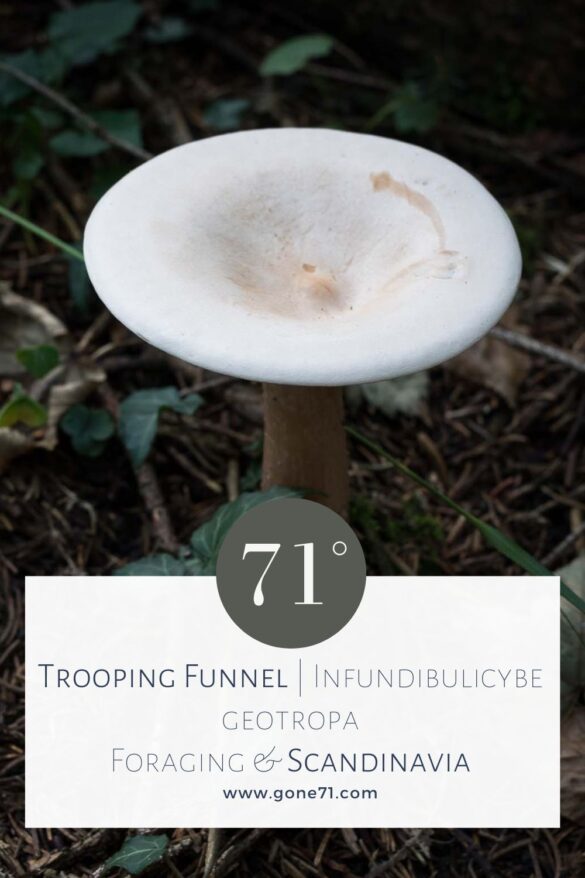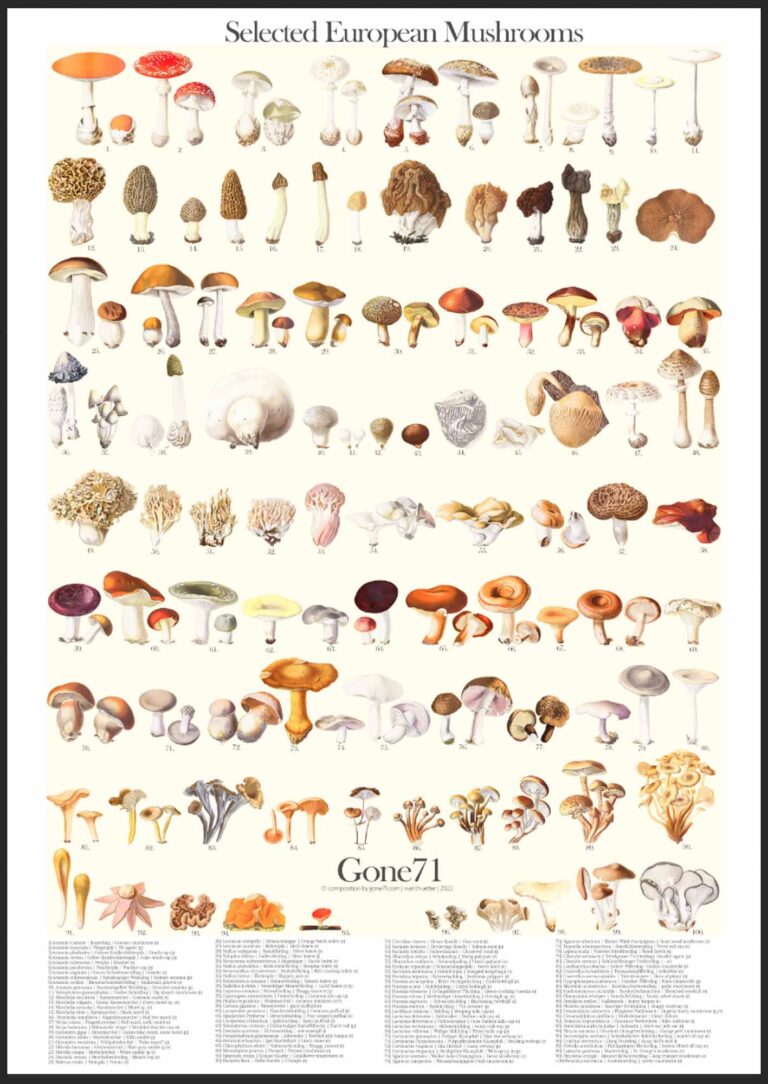nor.: Heggetraktsopp | swe.: Häggtrattskivling | fin.: Isomalikka | dt.: Mönchskopf | sci. syn.: Clitocybe geotropa
The Trooping funnel, also known as the Monk’s head, is a species of fungus that is commonly found in mixed forests and on calcareous soils all over Europe. This fungus grows during the summer and autumn, and is often found in large circles known as witches’ rings. The Trooping Funnel is a member of the funnel family, which encompasses over 100 different species, many of which are edible, while others are highly toxic. While this mushroom can be culinary rewarding, it is definitely only for very experienced foragers. White mushrooms with white lamellae are generally problematic because there are many highly poisonous species that can be confused.
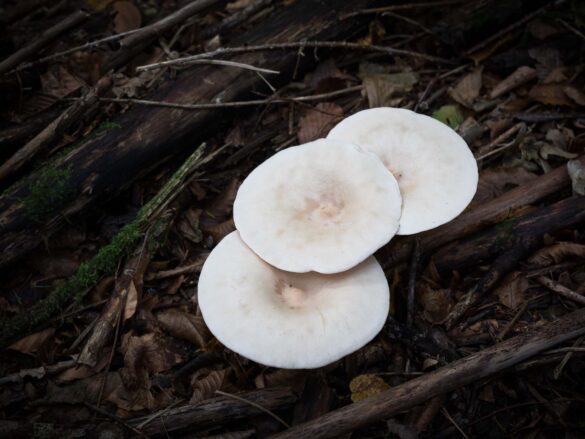
Appearance & habitat of the sheep polypore
cap diameter: 5-20 cm
trunk: 1-4 cm in diameter, 6-15cm long
months: June – Novemeber
colours: whitish, slightly brownish cap, similar coloured stem
habitat: mixed forests, calcerous soils
smell: slightly sweet
consumption: cooked
In terms of appearance, the Trooping Funnel has a cap that ranges in diameter from 5 to 20 (25) cm. The cap is white in color and is finely velvety, though it may become bald with age. The cap has a distinctive nipple or bump in the center, which can be felt by gently pressing with the fingers. The edge of the cap is rolled inward when young, and may become wavy as the fungus ages.
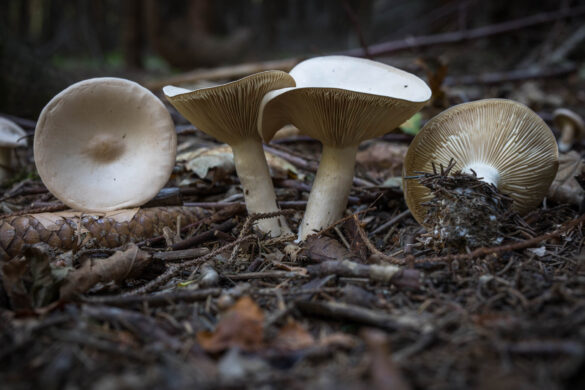
The flesh of the Trooping Funnel is white or cream-colored, and is relatively thick in the center of the cap. The stem is thickened at the base and may become watery and fibrous with age, making it unsuitable for consumption.
The gills of the Trooping Funnel are white to cream-colored and run down the stem. The spore powder is white and elliptical in shape, with a smooth surface and no cystidia.
The Trooping Funnel has a mild taste, though it may become slightly bitter with prolonged chewing when tested raw.
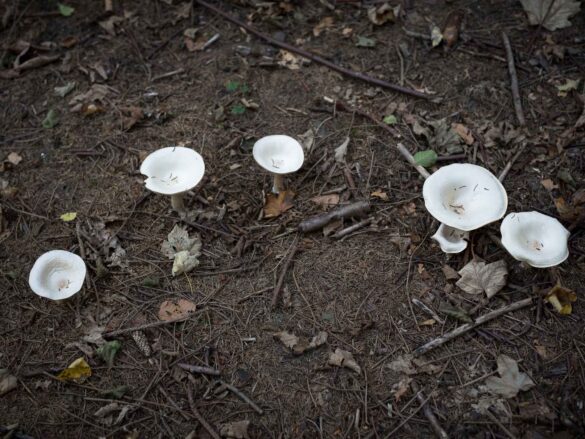
Lookalikes
The Trooping Funnel can easily be confused with other similar-looking species of fungi if you do not pay attention to the details. It’s charackteristic feature – the nibble – makes it usually fairly easy to distinguish it from other mushroom species, still you have to be absolutely certain if you want to pick this one. Possible doppelganger are:
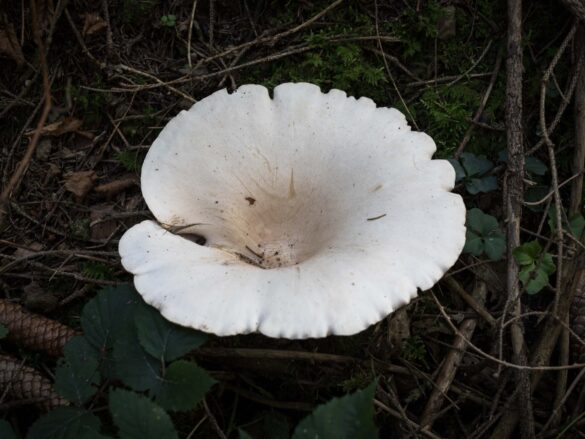
- The Giant Funnel (Infundibulicybe geotropa var. maxima) has a yellowish-brown cap with large, dark brown scales, while the Yellow Stainer has a yellow cap that becomes stained yellowish-green when bruised. In contrast, the Trooping Funnel has a white cap and no scales.
- Leucopaxillus giganteus, commonly known as the Giant Funnel, is a type of edible mushroom found in Europe and North America. Although it resembles the Trooping Funnel, there are several differences between these two mushrooms. The Giant Funnel has a much larger cap, typically ranging from 5 to 30 centimeters in diameter, and a more robust stem. Its gills are also more widely spaced and its spores often have a yellowish tinge. BOth are edible.
- Clitocybe phyllophila, also known as the Green-gilled Funnel, is a toxic species that is sometimes mistaken for the Trooping Funnel due to its similar appearance. However, it can be distinguished by its green gills and tendency to grow in leaf litter, rather than in woodland and parkland like the Trooping Funnel.
- Clitocybe nebularis, also known as the Clouded Funnel, is another species that is often confused with the Trooping Funnel. It has a white to light grey cap, similar to the Trooping Funnel, but it can be differentiated by its large size, with a cap that can reach up to 30 cm in diameter, and by its smooth, rather than velvety, cap surface.
- Melanoleuca verrucipes, also known as the Warted Melanoleuca, is another species that is sometimes mistaken for the Trooping Funnel. It has a similar cap shape and size, but it can be distinguished by its white to light tan cap with wart-like bumps, rather than the velvety surface of the Trooping Funnel.
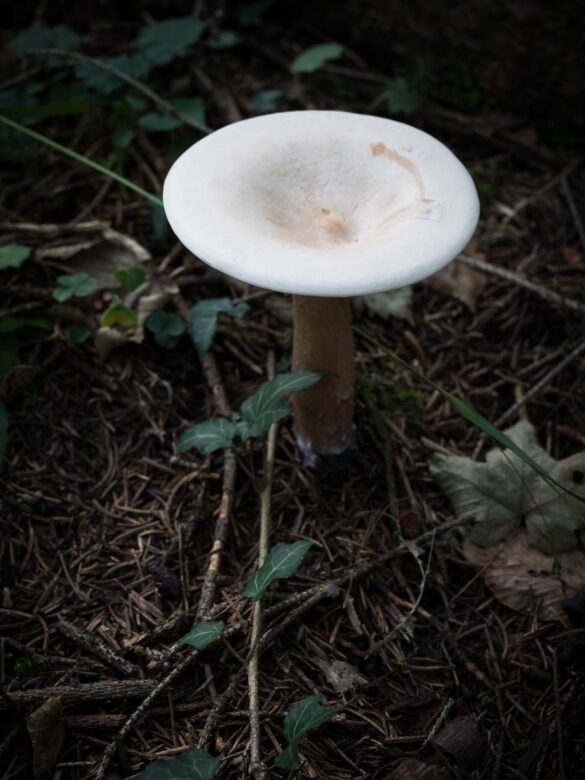
It’s important to pay close attention to key identifying features, such as cap color and texture, stem shape and size, and gill color and arrangement, to accurately identify mushroom species and avoid confusion.
Only harvest mushrooms that you can identify with 100% certainty! The consequences can be life threatening if you are wrong. If you have the slightest doubt: do not eat the mushroom! This is not a mushroom guide! For correct identification consult a mushroom expert.
Trooping funnel in the kitchen
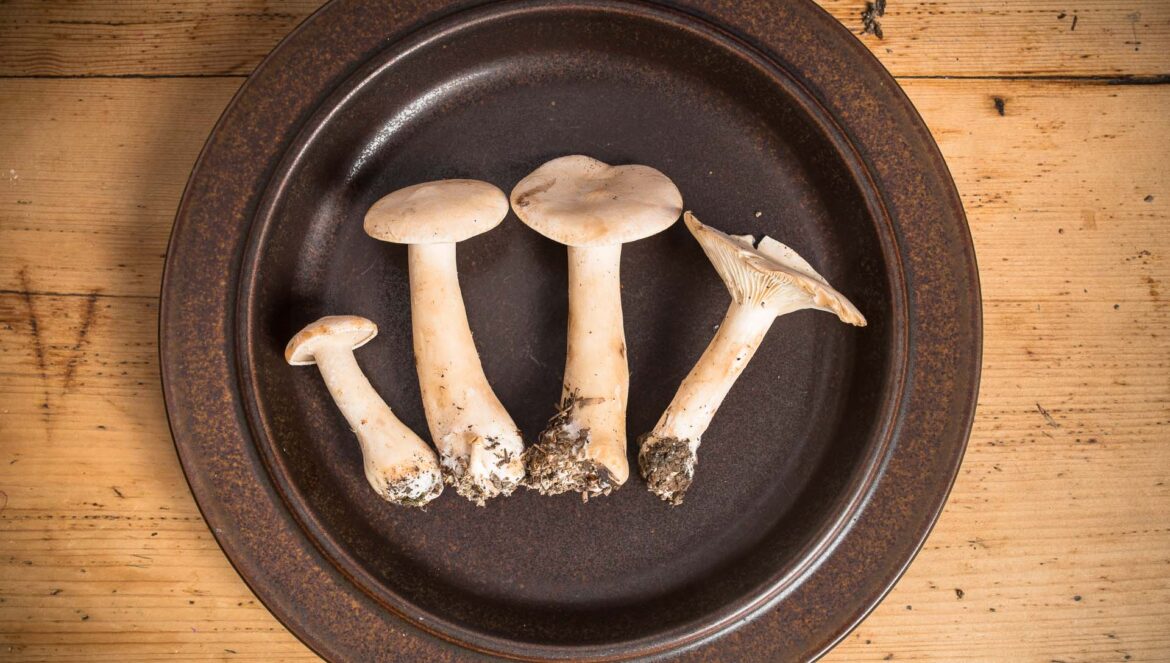
Due to the many potentially very toxic mix-ups, we have to repeat that this mushroom is certainly not for everyone. Make sure you know what you are doing before you set ut to collect this for your culinary joy. That said, we think once you can identify this mushroom correctly it can be very rewarding experience. Especially young specimen are kind of similar to (king) oyster mushrooms in taste and use for us.
One of the key culinary benefits of Trooping Funnel mushrooms is their versatility. Whether sauteed, grilled, or baked, this mushroom can be used in a wide range of dishes, from soups and sauces to pasta dishes and stir-fries. Its mild, slightly nutty flavor is especially well-suited to dishes that benefit from a touch of umami, making it an excellent ingredient for enhancing the flavor of sauces and stews.
Trooping funnel recipe
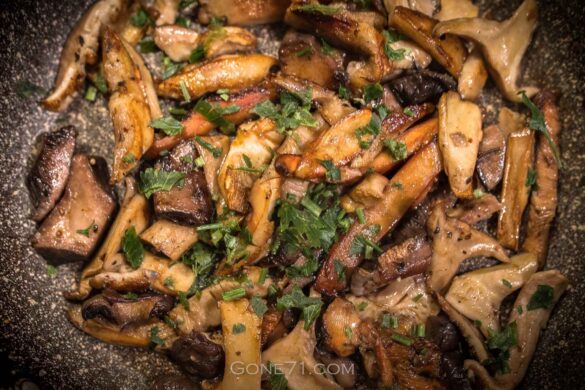
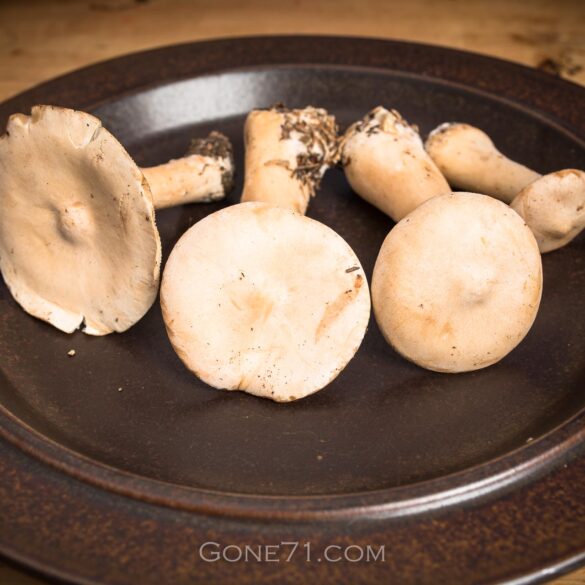
Ingredients
• 4 trout fillets
• Salt and pepper
• 2 tablespoons olive oil
• 4 garlic cloves, minced
• 600g trooping funnel, roughly chopped
• 2 tablespoons butter
• 1/4 cup fresh parsley, chopped
• Lemon wedges for serving
Instructions
1. Season the trout fillets with salt and pepper.
2. In a large pan, heat the olive oil over medium heat. Add the trout fillets, skin side down, and cook until the skin is crispy, about 3-4 minutes.
3. Flip the fillets and cook until they are just cooked through, about 2-3 minutes. Remove the fillets from the pan and set aside.
4. In the same pan, add the garlic and saute until fragrant, about 1 minute.
5. Add the trooping funnel and cook until they are tender, about 5-10 minutes.
6. Stir in the butter and parsley, and cook until the butter has melted and the parsley has wilted, about 1 minute.
7. Serve the sauteed trooping funnel and parsley alongside the trout fillets, garnished with lemon wedges. Enjoy!

We have compiled this overview with the best of knowledge and belief, but do not claim to be complete and reserve the right to make errors.
Learn more about poisonous mushrooms and mushroom poisons here
↓↓↓
Find some inspiration in our illustrations
↓↓↓
Find some inspiration in other mushroom recipes
↓↓↓
